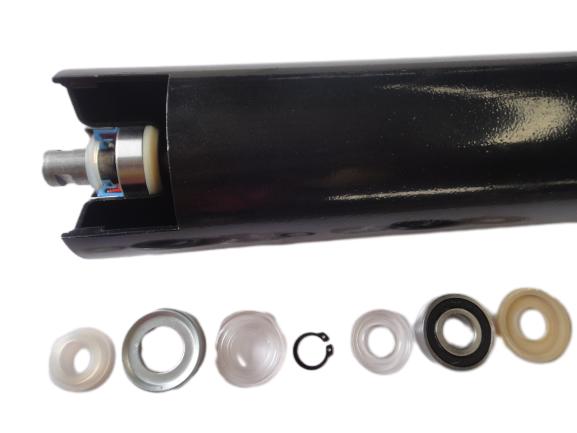 Afrikaans
Afrikaans  Albanian
Albanian  Amharic
Amharic  Arabic
Arabic  Armenian
Armenian  Azerbaijani
Azerbaijani  Basque
Basque  Belarusian
Belarusian  Bengali
Bengali  Bosnian
Bosnian  Bulgarian
Bulgarian  Catalan
Catalan  Cebuano
Cebuano  Corsican
Corsican  Croatian
Croatian  Czech
Czech  Danish
Danish  Dutch
Dutch  English
English  Esperanto
Esperanto  Estonian
Estonian  Finnish
Finnish  French
French  Frisian
Frisian  Galician
Galician  Georgian
Georgian  German
German  Greek
Greek  Gujarati
Gujarati  Haitian Creole
Haitian Creole  hausa
hausa  hawaiian
hawaiian  Hebrew
Hebrew  Hindi
Hindi  Miao
Miao  Hungarian
Hungarian  Icelandic
Icelandic  igbo
igbo  Indonesian
Indonesian  irish
irish  Italian
Italian  Japanese
Japanese  Javanese
Javanese  Kannada
Kannada  kazakh
kazakh  Khmer
Khmer  Rwandese
Rwandese  Korean
Korean  Kurdish
Kurdish  Kyrgyz
Kyrgyz  Lao
Lao  Latin
Latin  Latvian
Latvian  Lithuanian
Lithuanian  Luxembourgish
Luxembourgish  Macedonian
Macedonian  Malgashi
Malgashi  Malay
Malay  Malayalam
Malayalam  Maltese
Maltese  Maori
Maori  Marathi
Marathi  Mongolian
Mongolian  Myanmar
Myanmar  Nepali
Nepali  Norwegian
Norwegian  Norwegian
Norwegian  Occitan
Occitan  Pashto
Pashto  Persian
Persian  Polish
Polish  Portuguese
Portuguese  Punjabi
Punjabi  Romanian
Romanian  Russian
Russian  Samoan
Samoan  Scottish Gaelic
Scottish Gaelic  Serbian
Serbian  Sesotho
Sesotho  Shona
Shona  Sindhi
Sindhi  Sinhala
Sinhala  Slovak
Slovak  Slovenian
Slovenian  Somali
Somali  Spanish
Spanish  Sundanese
Sundanese  Swahili
Swahili  Swedish
Swedish  Tagalog
Tagalog  Tajik
Tajik  Tamil
Tamil  Tatar
Tatar  Telugu
Telugu  Thai
Thai  Turkish
Turkish  Turkmen
Turkmen  Ukrainian
Ukrainian  Urdu
Urdu  Uighur
Uighur  Uzbek
Uzbek  Vietnamese
Vietnamese  Welsh
Welsh  Bantu
Bantu  Yiddish
Yiddish  Yoruba
Yoruba  Zulu
Zulu Affordable Bend Pulley Options for Efficient Performance and Reliable Material Handling Solutions
Understanding the Pricing of Bend Pulley in Industrial Applications
Bend pulleys are crucial components in various mechanical systems, particularly in conveyor systems, elevator systems, and other industrial machinery. Their primary function is to guide and redirect belts, ensuring efficiency and effectiveness in the overall operation. The price of bend pulleys can vary significantly based on several factors, including material, size, design complexity, and manufacturing processes. In this article, we will explore these factors and their impact on pricing.
Materials and Manufacturing
The materials used in bend pulleys greatly influence their price. Commonly, bend pulleys are made from steel, aluminum, or plastics, with steel being the most durable and, correspondingly, usually the most expensive. High-quality steel pulleys often feature protective coatings to prevent corrosion and wear, which can add to the cost. In contrast, aluminum pulleys are lighter and resistant to rust, making them suitable for specific environments but potentially less durable than their steel counterparts.
Additionally, the manufacturing process plays a key role in determining price. Precision-engineered pulleys that require advanced machining techniques or custom designs will generally be more expensive than mass-produced standard models. Manufacturers may use techniques such as CNC machining, casting, or forging, each contributing differently to the production costs.
Size and Design
The size of a bend pulley is another essential factor affecting its pricing. Larger pulleys typically require more material and more complex engineering to achieve the necessary strength and durability, which can increase costs. Conversely, smaller pulleys utilize less material and may be simpler in design, leading to lower price points.
Design complexity is also critical in pricing. Bends with intricate designs or specific engineering requirements will incur higher costs, while standard, straightforward designs will be more economical. Companies often sell both standard and custom bend pulleys, catering to various industry needs, and the choice between these options significantly impacts pricing.
bend pulley price

Market Demand and Supply
Market demand and supply dynamics play a pivotal role in determining the prices of bend pulleys. Industries such as mining, construction, and manufacturing frequently rely on high-quality bend pulleys, and fluctuations in these industries can influence overall demand. When demand surges, such as during a boom in construction, prices may increase due to the higher pressure on suppliers to satisfy the market needs.
Conversely, during economic downturns, when projects are minimized, the demand for bend pulleys could decrease, leading to competitive pricing from manufacturers trying to maintain sales. Suppliers may implement discounts or promotions to encourage sales during such periods, impacting prices significantly.
Supplier Pricing Strategies
Different suppliers may adopt varying pricing strategies based on their target market, production capacity, and distribution channels. Some suppliers may offer lower prices for bulk purchases, appealing to large companies that require extensive quantities for their operations. In contrast, boutique manufacturers may focus on quality and specialization, which could justify higher price points for their products.
Conclusion
In summary, the pricing of bend pulleys is influenced by multiple interrelated factors, including material choice, size, design complexity, market demand, and supplier strategies. When procuring bend pulleys, it's essential for businesses to consider these factors comprehensively. Quality should never be compromised for cost, as inferior pulleys can lead to operational inefficiencies and increased maintenance costs down the line. By understanding the dynamics at play, decision-makers can make informed choices that align with their operational requirements and budget constraints, ensuring that they select the optimal bend pulley for their needs.
-
Revolutionizing Conveyor Reliability with Advanced Rubber Lagging PulleysNewsJul.22,2025
-
Powering Precision and Durability with Expert Manufacturers of Conveyor ComponentsNewsJul.22,2025
-
Optimizing Conveyor Systems with Advanced Conveyor AccessoriesNewsJul.22,2025
-
Maximize Conveyor Efficiency with Quality Conveyor Idler PulleysNewsJul.22,2025
-
Future-Proof Your Conveyor System with High-Performance Polyurethane RollerNewsJul.22,2025
-
Driving Efficiency Forward with Quality Idlers and RollersNewsJul.22,2025





























